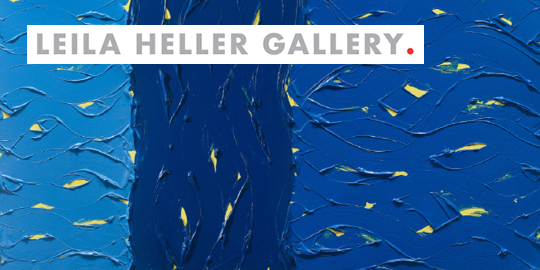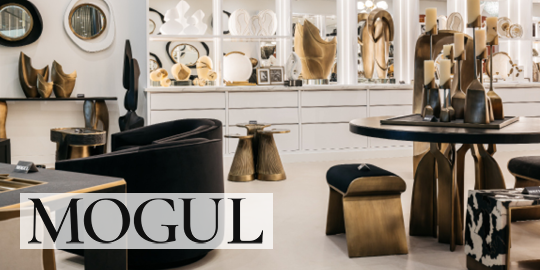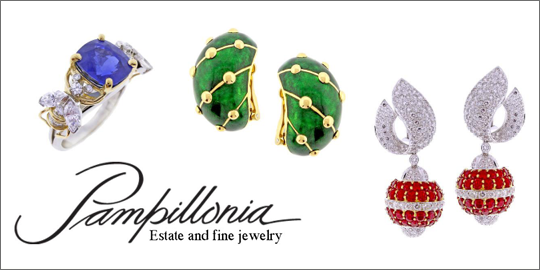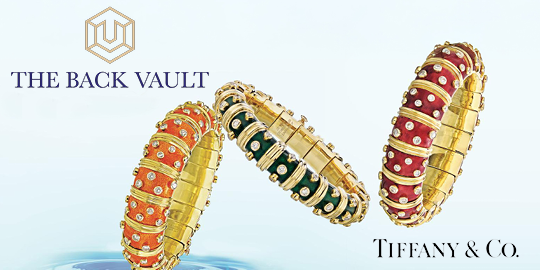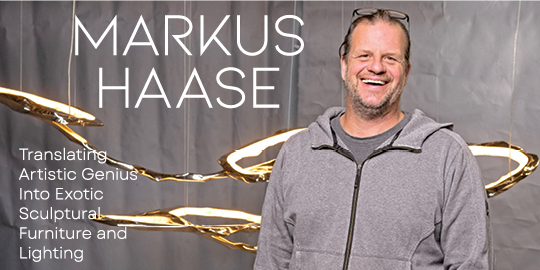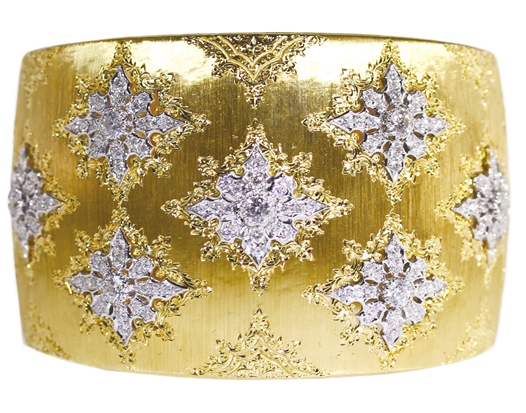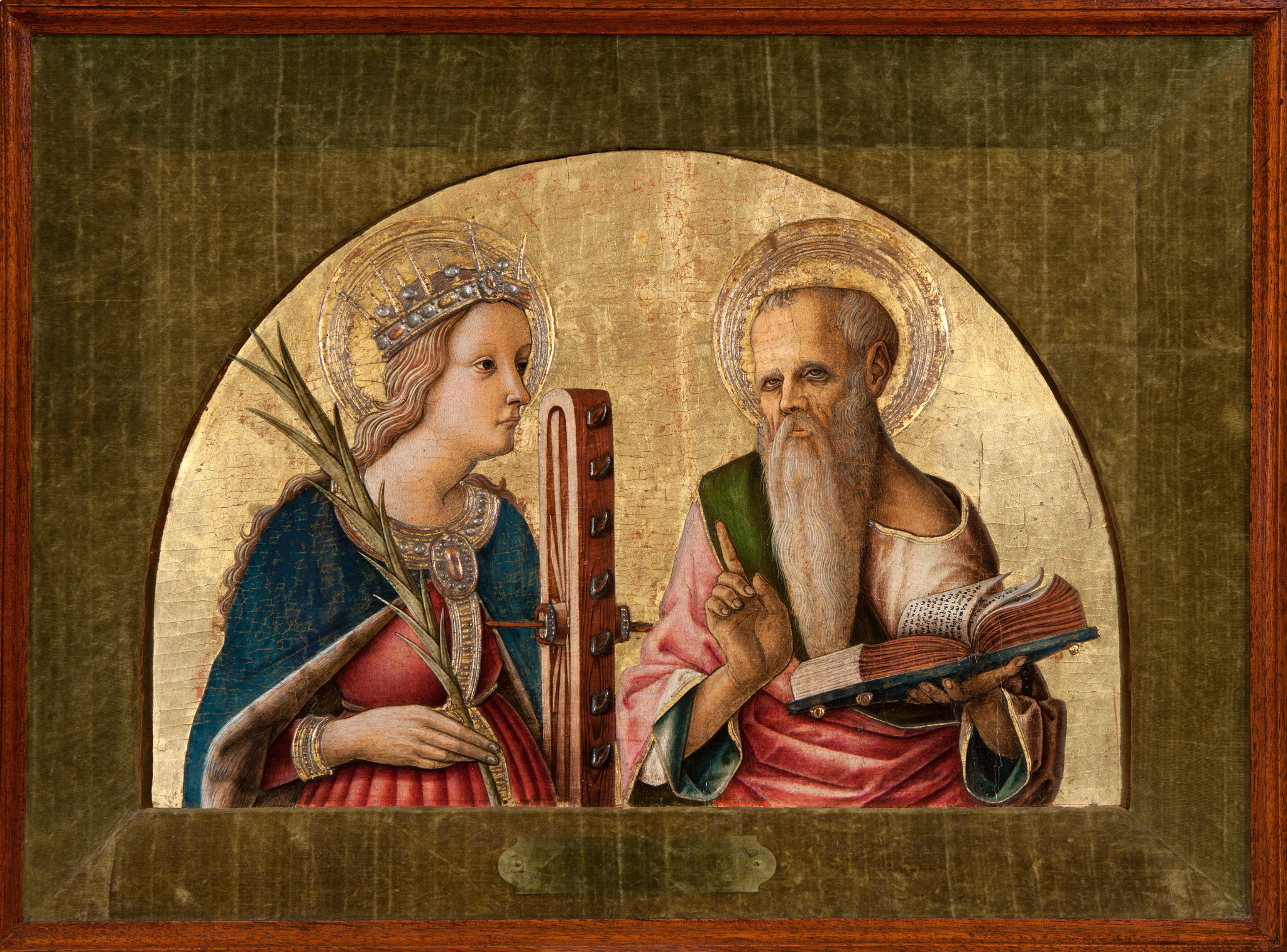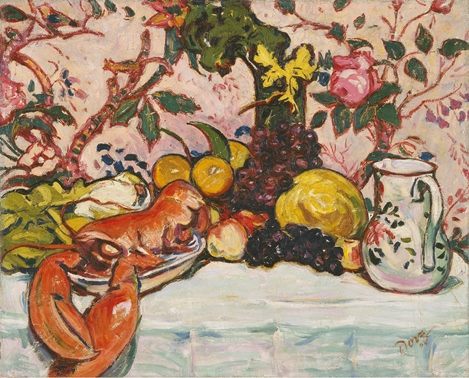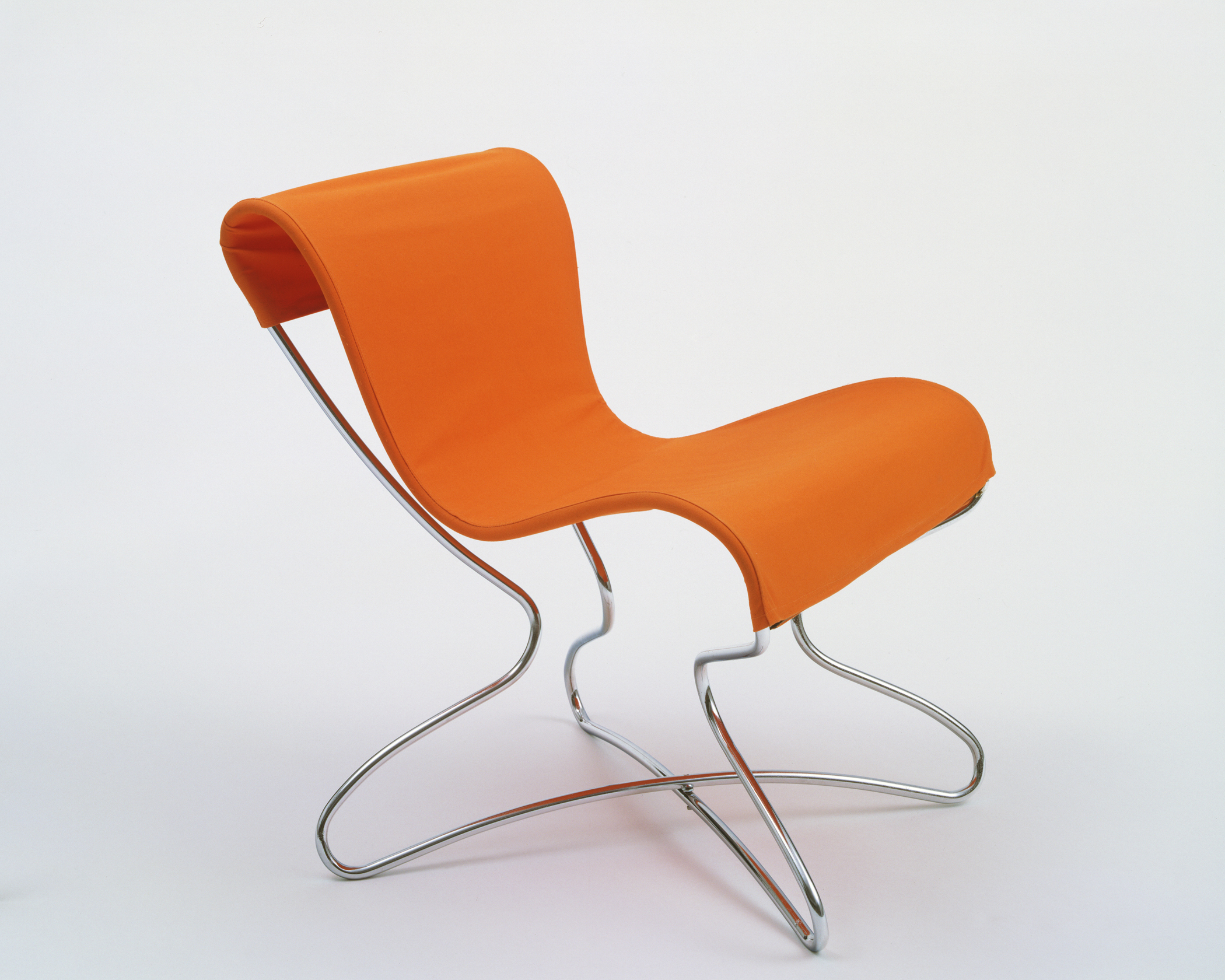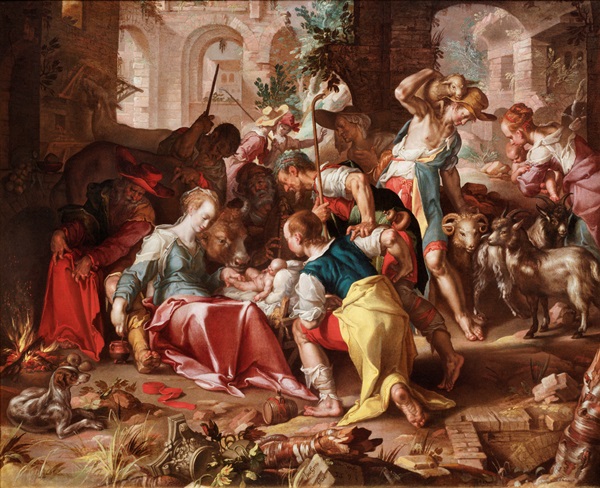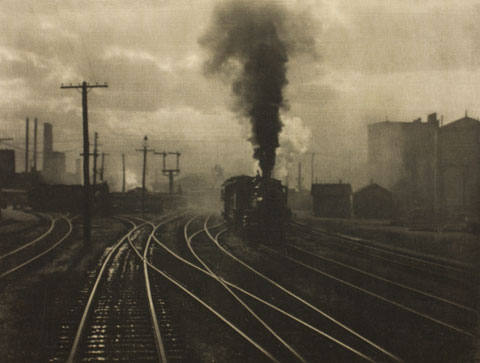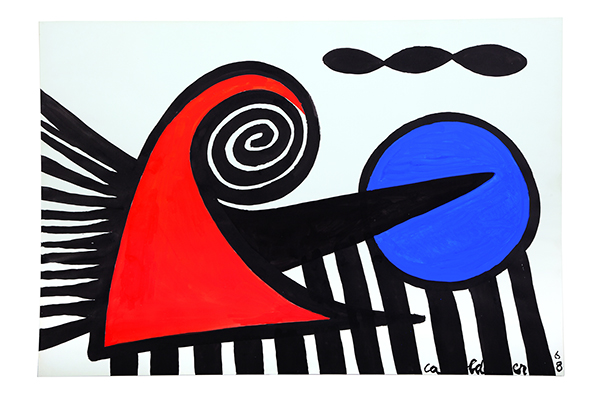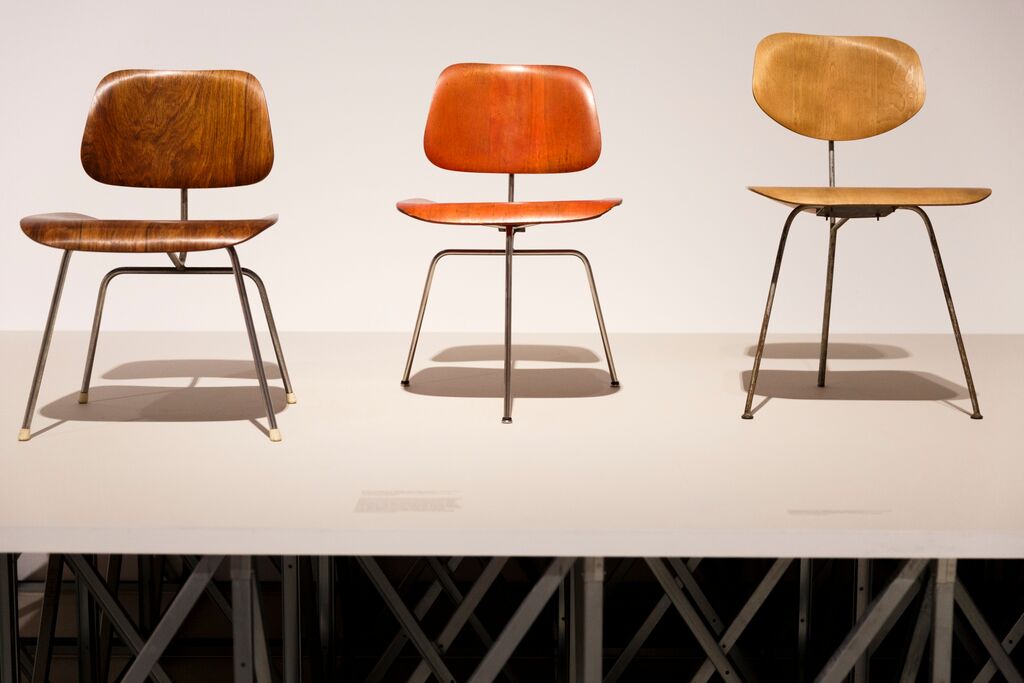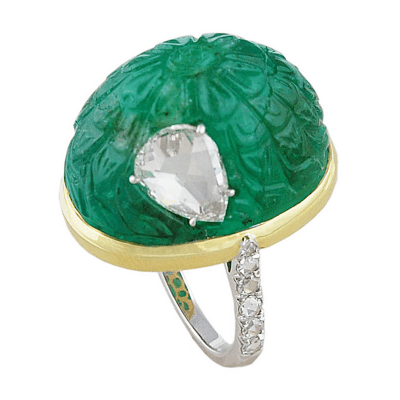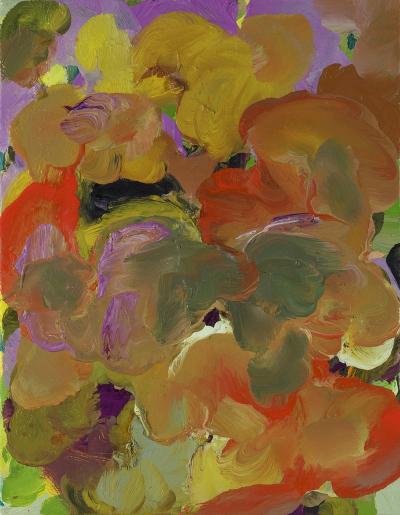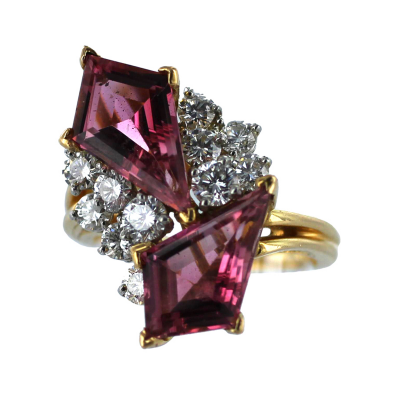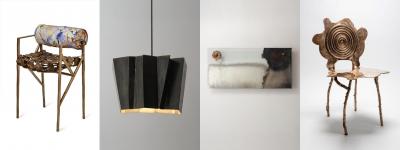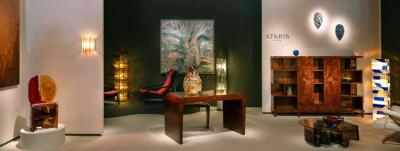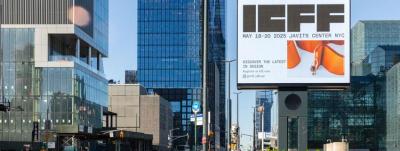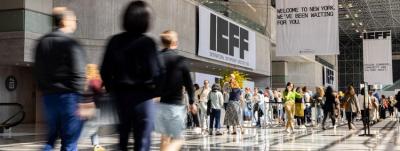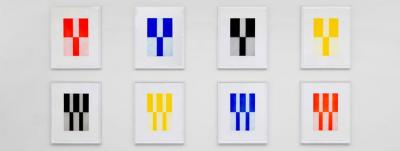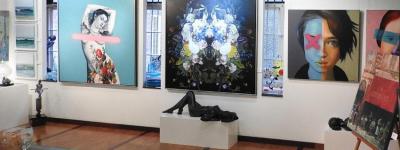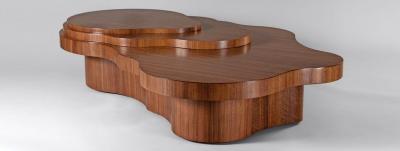This Week’s Major Events: Old Masters, Pop Art, Jewelry and Design in New York, Chicago, London and Milan.
October 27-November 2, 2015
NEW YORK
New York City Jewelry & Watch Show, Metropolitan Pavilion, New York, NY
October 30-November 1, 2015
The Palm Beach Show Group continues to expand its impressive line-up of shows with the launch of the New York City Jewelry & Watch Show that will take place October 30 – November 1, 2015 at the Metropolitan Pavilion and will feature more than 100 international dealers. The show is poised to be an exciting new event in New York City in the Fall of 2015, showcasing a remarkable array of antique and estate jewelry and watches as well as select contemporary pieces. The show will present the finest jewelry and watch dealers from around the world, showcasing their one-of-a-kind pieces and offering a momentous shopping experience prior to the Holiday Season. Click here to continue reading.
Frank Stella: A Retrospective, Whitney Museum of American Art, New York, NY
October 30, 2015-February 7, 2016
The Museum will present a career retrospective of Frank Stella (b. 1936), one of the most important living American artists. This survey will be the most comprehensive presentation of Stella’s career to date, showcasing his prolific output from the mid-1950s to the present through approximately 120 works, including paintings, reliefs, maquettes, sculptures, and drawings. Co-organized by the Modern Art Museum of Fort Worth and the Whitney, this exhibition will feature Stella’s best-known works alongside rarely seen examples drawn from collections around the world. Click here to continue reading.
NEW JERSEY
Ursula von Rydingsvard and Others: Materials and Manipulations, University Art Museum, Princeton, NJ
On view through February 7, 2016
Ursula von Rydingsvard (born 1942) has explored organic and inorganic materials, the familiar and the unfamiliar for decades. She is best known for her often monumentally scaled work in cedar—frequently crafted from four-by-fours painstakingly remade with such untraditional sculptural tools as a circular saw, and then assembled in equally transformative modes. Von Rydingsvard’s process is laborious and her approach fearless. Her results challenge us to reconsider the nature of material form and have made her one of today’s most admired sculptors. Click here to continue reading.
MASSACHUSETTS
Ornament and Illusion: Carlo Crivelli of Venice, Isabella Stewart Gardner Museum, Boston, MA
On view through January 25, 2016
Carlo Crivelli (1430 or 1435 to about 1494) is one of the most important, but historically neglected, painters of the fifteenth century. He manipulated the surface of each painting with rare mastery of the medium, crafting visionary encounters with the divine, forging the modern icon, and offering a powerful alternative to new models of art associated with Florence. Crivelli produced the majority of his paintings in the Marches, a region of northeast Italy. This exhibition expands our understanding of the “Renaissance” beyond Florence and Venice and explores the work of this technically gifted – and tremendously ambitious – artist. Click here to continue reading.
An Eye for Excellence: Twenty Years of Collecting, The Clark Art Institute, Williamstown, MA
On view through April 10, 2016
The Clark's permanent collection has grown and developed in remarkable ways over the past twenty years. Nearly one-quarter of the 9,713 objects now in the Clark's collection have been acquired during this period. Exceptional works have been added to every area of the collection, including painting, sculpture, decorative arts, drawings, prints, and the new collecting area of early photography. The Institute acquires works of art through purchase and by gift and adheres to the standard of excellence that is a legacy of its founders, Sterling and Francine Clark. Click here to continue reading.
PENNSYLVANIA
Audubon to Warhol: The Art of American Still Life, Philadelphia Museum of Art, Philadelphia, PA
October 27, 2015 - January 10, 2016
The first survey of American still life in three decades, this exhibition offers 130 oil paintings, watercolors, and works in other media representing the finest accomplishments in the genre. Featuring masterpieces by John James Audubon, the Peale family, William Michael Harnett, Georgia O’Keeffe, Andy Warhol, and others, this exhibition explores American still life from its beginnings in the late 1700s to the Pop Art era of the 1960s. Taking a fresh approach to the subject to reveal the genre’s astonishing variety, the exhibition presents four distinct eras of American still life, each defined by a unique culture of seeing objects: describing, indulging, discerning, and animating. Within these sections, visitors are encouraged to explore still life as a reflection of American identity and culture through time. Click here to continue reading.
WASHINGTON, D.C.
Pathmakers: Women in Art, Craft, and Design, Midcentury and Today, National Museum of Women in the Arts, Washington, D.C.
October 30, 2015-February 28, 2016
This exhibition presents dynamic women designers and artists from the mid-20th century and today making groundbreaking commercial and industrial designs, maintaining craft traditions, and incorporating new aesthetics into fine art. In the 1950s and ’60s, an era when painting, sculpture, and architecture were dominated by men, women had considerable impact in alternative materials such as textiles, ceramics, and metals. Pioneers in these fields—including Ruth Asawa, Edith Heath, Sheila Hicks, Karen Karnes, Dorothy Liebes, Alice Kagawa Parrott, Lenore Tawney, and Eva Zeisel—had tremendous influence as designers, artists, and teachers. Their artistic practices varied widely—some exhibited in New York City galleries, others took part in the regional handicraft scene in Santa Fe, New Mexico, and still others collaborated with corporations such as General Motors. Click here to continue reading.
TEXAS
Pleasure and Piety: The Art of Joachim Wtewael (1566–1638), Museum of Fine Arts, Houston, TX
November 1, 2015-January 31, 2016
Late-Renaissance artist Joachim Wtewael was a remarkable storyteller and a great master of the Dutch Golden Age. Pleasure and Piety includes 35 of Wtewael’s finest paintings on canvas, copper, and panel, along with a selection of drawings. The first-ever monographic exhibition devoted to Wtewael, Pleasure and Piety: The Art of Joachim Wtewael (1566–1638) sheds light on his artistic excellence. The works on view showcase an expert draftsman and a brilliant colorist who could work in large and small scale with equal ease. Born and raised in Utrecht, the Netherlands, Wtewael (pronounced OO-te-vall) embraced international Mannerism, a popular painting style characterized by extreme refinement, artifice, and elegant distortion. Click here to continue reading.
ILLINOIS
Alfred Stieglitz and the 19th Century, Art Institute of Chicago, Chicago, IL
October 31, 2015-March 27, 2016
Alfred Stieglitz (American, 1864–1946) tirelessly promoted photography as a fine art. Through his own photographic work over the course of a half-century, the photographic journals he edited and published, and the New York galleries at which he organized exhibitions of photographs, paintings, and sculpture, Stieglitz showed photography to be an integral part of modern art in America. In a search for artistic ancestors, he looked intently at photography of the 19th century, most notably that of Julia Margaret Cameron and the Scottish duo David Octavius Hill and Robert Adamson. Click here to continue reading.
CALIFORNIA
A Passionate Eye: The Weiner Family Collection, Palm Springs Art Museum, Palm Springs, CA
On view through January 31, 2016
The Weiner Family Collection, with its singular emphasis on great sculpture, is one of the most important collections of modern art ever assembled in the Southwest. Since 1969 when the Palm Springs Desert Museum (as it was then named) presented an exhibition drawn from its holdings, most of the collection has resided in Palm Springs at this museum as both loans and gifts. An early donation by Ted and Lucile Weiner of Marino Marini’s The Warrior, which still graces the museum’s front entrance, was followed by gifts from their daughter Gwendolyn of such masterpieces as Henry Moore’s Two Piece Reclining Figure No. 3, Marc Chagall’s The Village, Alexander Calder’s The Lizard, and other icons of modern art. Click here to continue reading.
LONDON
The World of Charles and Ray Eames, Barbican, London
On view through February 14, 2016
Charles and Ray Eames are among the most influential designers of the 20th century. Enthusiastic and tireless experimenters, this husband and wife duo moved fluidly between the fields of photography, film, architecture, exhibition-making, and furniture and product design. The Eames Office was a hub of activity where the Eameses and their collaborators produced an array of pioneering designs, communicating their ideas with a boundless creativity that defined their careers. The Eameses embraced the joy of trial and error and approached design as a way of life. From personal letters, photographs, drawings and artwork, to their products, models, multi-media installations and furniture, The World of Charles and Ray Eames includes not only the designs for which they are best known, but provides an insight into the lives of the Eameses, the Eames Office and the breadth of their pioneering work, bringing their ideas and playful spirit to life. Click here to continue reading.
MILAN
A Beautiful Confluence: Anni and Josef Albers and the Latin American World, Museo della Culture, Milan
October 28, 2015-March 13, 2016
Anni Albers was a weaver, print maker, and writer on aesthetic theory; she is considered by many to have been the most innovative and influential textile artist of the twentieth century. Josef Albers was a painter, print maker, teacher, writer, and maker of furniture, glass constructions, and metal work; his exploration of color behavior continues to effect the way people see and work in every visual field. Born in Germany, the Alberses met at the renowned Bauhaus School shortly after it opened its doors and remained there until the Third Reich forced its closing. Click here to continue reading.
JERUSALEM
Twilight Over Berlin: 50 Masterworks from the Neue Nationalgalerie, Israel Museum, Jerusalem
On view through December 31, 2015
The beginning of the 20th century saw an artistic flourishing in Germany embodied in the works of the great Expressionists, and later in that of the innovative artists of the Weimar Republic. The Nazi regime sought to put an end to this artistic activity – branding it “degenerate art” – and many of the artists had to flee Germany, creating an avant-garde exiled community whose influence also reached pre-State Israel. Click here to continue reading.



